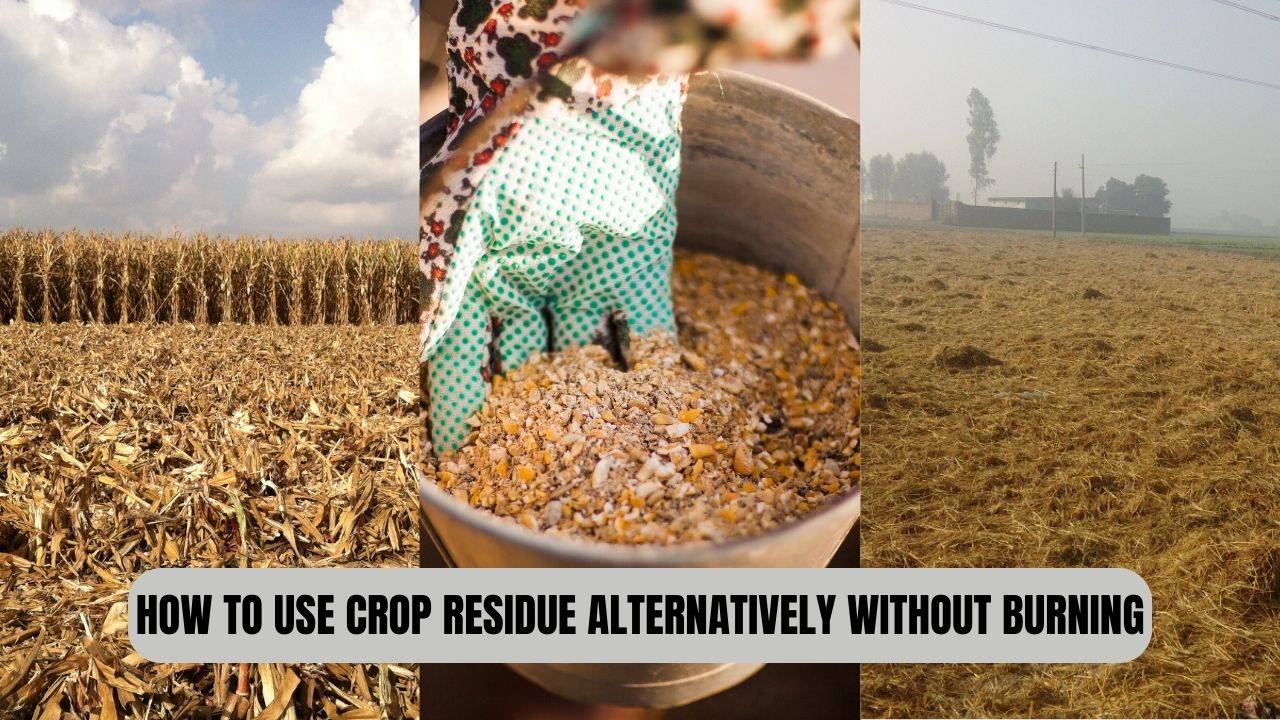
Crop residue, often referred to as "Parali" in India, has been a significant concern due to its contribution to air pollution when burned.
However, rather than resorting to this harmful practice, there are several environmentally friendly and beneficial uses for crop residue that can not only reduce pollution but also offer economic and agricultural advantages. In this article, we will explore six key uses of crop residue that go beyond burning.
-
Mulching
Crop residue can be used as mulch in agricultural fields. Mulching involves spreading a layer of crop residue over the soil surface. This layer acts as a protective barrier, helping to retain soil moisture, suppress weed growth, and regulate soil temperature. Mulching also prevents soil erosion and increases the organic matter content, promoting healthier and more fertile soils.
-
Animal Feed
One of the most common and valuable uses of crop residue is as animal feed. Crop residue, such as straw and husks, can provide nutrition to livestock, including cattle, goats, and sheep. By feeding animals with crop residue, farmers can reduce the cost of animal feed and simultaneously recycle agricultural waste.
-
Composting
Crop residue can be incorporated into the composting process. When combined with other organic matter, it helps create nutrient-rich compost. This compost can be used to enhance soil fertility, making it an excellent addition to organic farming practices. Composting crop residue reduces waste and benefits the environment by reducing the need for synthetic fertilizers.
-
Bioenergy Production
Crop residue can be utilized to produce bioenergy. Technologies such as biogas and biomass pellets can convert crop residue into clean and renewable energy sources. This not only reduces the pressure on fossil fuels but also mitigates air pollution by avoiding the release of harmful emissions caused by burning.
-
Mushroom Cultivation
Certain crop residues, like paddy straw, serve as an excellent substrate for mushroom cultivation. Mushrooms thrive on the cellulose-rich material present in crop residue. This not only offers an additional source of income for farmers but also reduces the need for synthetic material in mushroom cultivation.
-
Construction Material
Crop residue can be processed into construction material. For instance, rice straw can be used to create particleboard and other composite materials. By utilizing crop residue in this manner, it reduces the demand for traditional construction material, ultimately contributing to sustainable building practices.
Thus, crop residue, often regarded as a source of air pollution when burned, can be put to numerous eco-friendly uses that benefit both the environment and agriculture. By adopting alternative uses, we can reduce air pollution, conserve resources, and improve the overall sustainability of our agricultural practices. It is imperative for farmers, policymakers, and communities to collaborate in adopting these innovative solutions to tackle the issue of crop residue effectively.
















